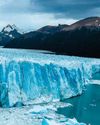BACKYARD POWER STATIONS
How It Works UK
|Issue 206
With growing demand and dwindling resources, there's only one direction fuel bills are going. But soon we could have power stations in our gardens

Energy prices are high almost everywhere in the world and are getting higher.
It's turned the cost of the fuel we use to power our homes into a political issue that's changing the course of elections. In the UK, household energy bills have risen by 34 per cent since early 2022. Meanwhile, everyone is trying their best to ignore the elephant in the room - the looming climate crisis.
But there's a point of light on the horizon. Technology is being developed that may release us from this monstrous mess by allowing us to generate our own clean, cheap energy at home. In ten years, many more of us may not only be generating enough power for our own needs, but also selling the excess back to the power companies. It's a win-win-win situation: pollution and emissions are reduced, energy efficiency goes through the roof and homeowners no longer need to worry about whether power company bosses fancy a new boat for Christmas.
The technologies that enable this vision of the future are known as 'microgeneration' because they permit the generation of electricity and heat on far smaller scales than traditional power plants. While a single big plant is often more efficient than thousands of small ones, a significant portion of what it produces is then lost between the power station and your house. But by attaching what is essentially a small power plant to your house, losses are minimised.
The options for homeowners, small businesses and communities to generate their own power are currently fairly limited. Today's generation of solar panels and wind turbines are effective when used en masse, but on a smaller scale they can take upwards of 10 or 20 years for the reduced energy bills to fully offset the upfront cost of installation.
This story is from the Issue 206 edition of How It Works UK.
Subscribe to Magzter GOLD to access thousands of curated premium stories, and 10,000+ magazines and newspapers.
Already a subscriber? Sign In
MORE STORIES FROM How It Works UK
How It Works UK
20 WEARABLE HEALTH TRACKERS
Whether you strap a wellness coach to your wrist or weave subtle sensors into your clothes, these devices are revolutionising how we track our health
9 mins
Issue 210
How It Works UK
SUPERPOWERED PLANTS
The world of plants is vibrant and diverse, just like this book.
1 min
Issue 210
How It Works UK
SECRET STORIES OF LOST BEASTS
We're all aware of the mighty dinosaurs that once roamed Earth, but there are so many weird and wonderful species that have been lost to time.
1 min
Issue 210

How It Works UK
ALL ABOUT BLIMPS
Is it a bird? Is it a spaceship? No... it's a non-rigid airship
2 mins
Issue 210
How It Works UK
SUPER QUESTERS MISSION: RAINFOREST MAGIC
Join adventurers Leo, Lilli and Bea as they transform into superheroes and journey to the rainforest in the pursuit of knowledge.
1 min
Issue 210

How It Works UK
HOW THE MIGHTY MAMMOTH RULED THE ICE AGE
Meet the prehistoric giants that roamed the Arctic Circle thousands of years ago
4 mins
Issue 210
How It Works UK
Have they found LIFE ON MARS?
Although it's by no means certain, scientists are slowly accumulating evidence that life once existed on the Red Planet
2 mins
Issue 210

How It Works UK
HOW FAST DO GLACIERS MOVE?
The speed at which a glacier flows depends on its mass, the depth and slope of the underlying rock bed and friction.
1 min
Issue 210

How It Works UK
HOW IN-FLIGHT WI-FI WORKS
This technology allows you to scroll to your heart's content while killing time at cruise altitude
3 mins
Issue 210

How It Works UK
HOW WIGWAMS WERE BUILT
Discover the construction and living conditions inside these traditional domed dwellings
1 mins
Issue 210
Listen
Translate
Change font size

